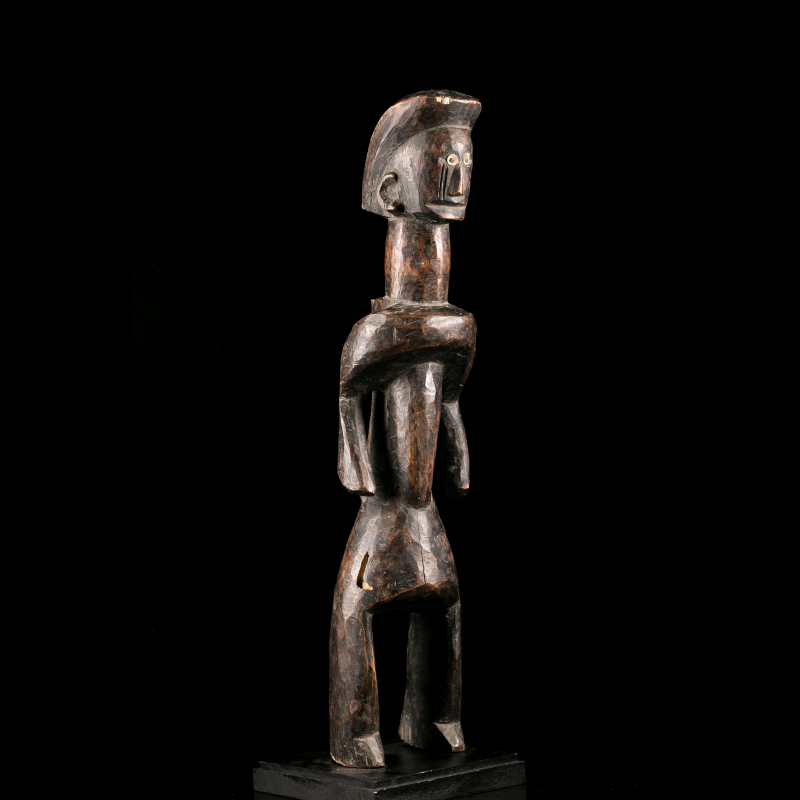










The role of African Mumuye statues revolves around four themes: welcoming and guarding the house, conversation, judgment and healing. We encountered statues at a blacksmith and a rainmaker; others were reported in a hut reserved for ceremonies linked to the initiation of boys.
The family dwellings include several huts, one of which, quite far from the entrance door to the enclosure and used for sleeping, is used to keep the family's "precious objects", probably including statues.
The Mumuye attribute great importance to the preservation of the skulls of deceased family members, which they keep in certain places with sculpted objects.
Mumuye country runs along the southeast bank of the Benoue River in northern Nigeria. It is a region composed mainly of rocky hills of difficult access, which explains why the art was only discovered from 1968; although E. Von Sydow already pointed out in 1928 the importance of the statuary of non-Islamized peoples of northern Nigeria.
Indeed, the Mumuye and their close neighbors did not experience, at the beginning of the 19th century, the religious war of the Fulani, who tried to win Nigeria over to Islam, and was at the origin of the decadence of Oyo , Yoruba kingdom.
Statue from the Ringoot African art collection, Belgium.
Data sheet

The role of African Mumuye statues revolves around four themes: welcoming and guarding the house, conversation, judgment and healing. We encountered statues at a blacksmith and a rainmaker; others were reported in a hut reserved for ceremonies linked to the initiation of boys.
The family dwellings include several huts, one of which, quite far from the entrance door to the enclosure and used for sleeping, is used to keep the family's "precious objects", probably including statues.
The Mumuye attribute great importance to the preservation of the skulls of deceased family members, which they keep in certain places with sculpted objects.
Mumuye country runs along the southeast bank of the Benoue River in northern Nigeria. It is a region composed mainly of rocky hills of difficult access, which explains why the art was only discovered from 1968; although E. Von Sydow already pointed out in 1928 the importance of the statuary of non-Islamized peoples of northern Nigeria.
Indeed, the Mumuye and their close neighbors did not experience, at the beginning of the 19th century, the religious war of the Fulani, who tried to win Nigeria over to Islam, and was at the origin of the decadence of Oyo , Yoruba kingdom.
Statue from the Ringoot African art collection, Belgium.